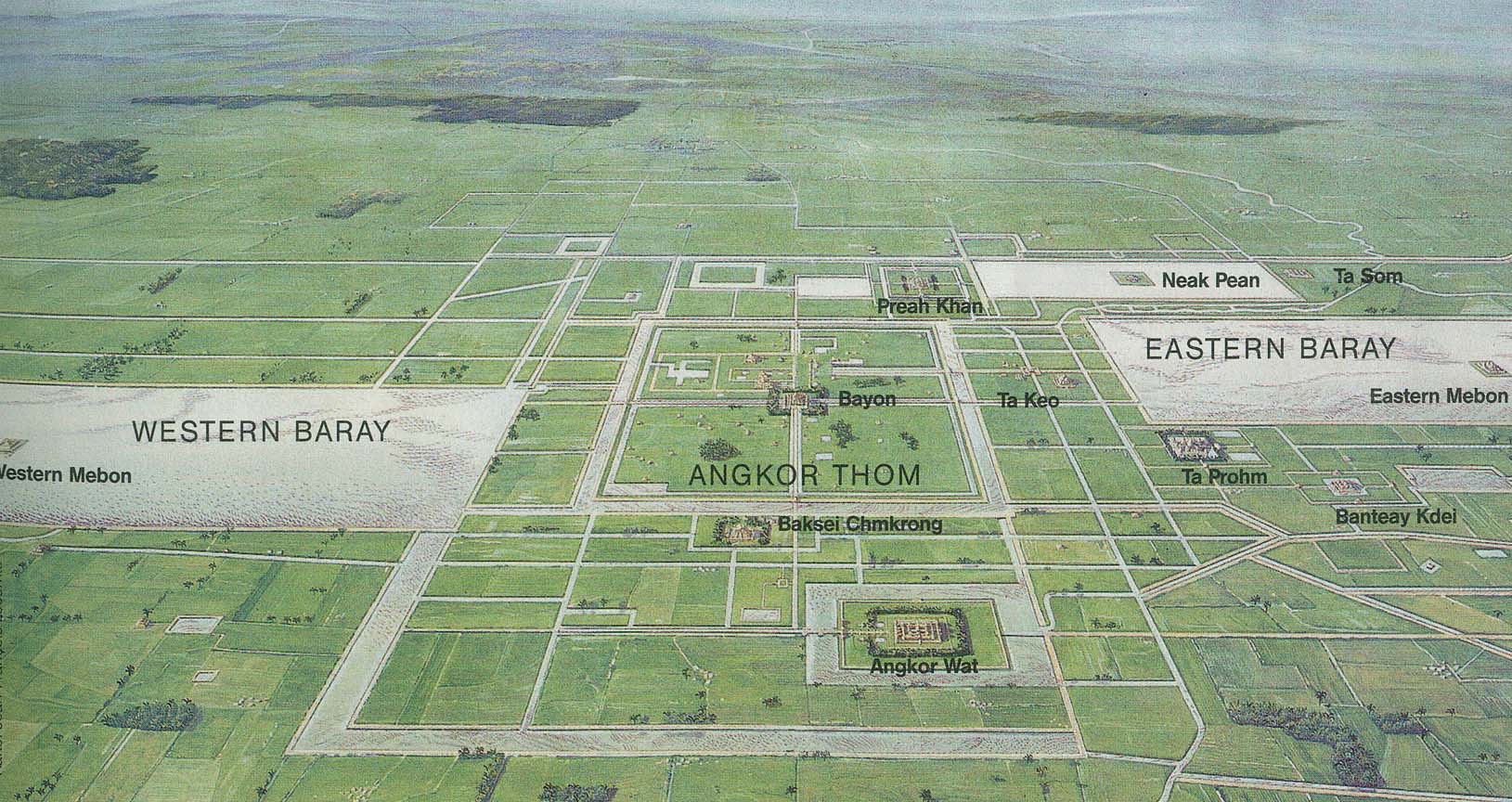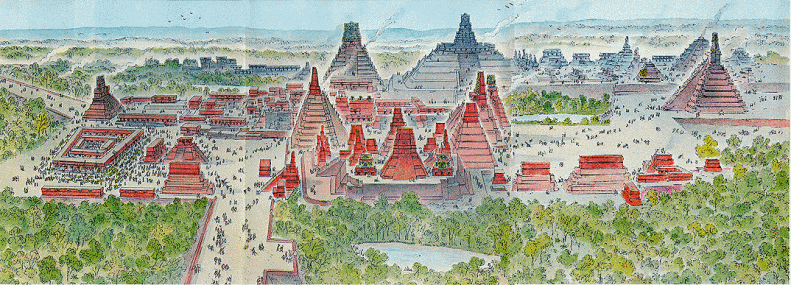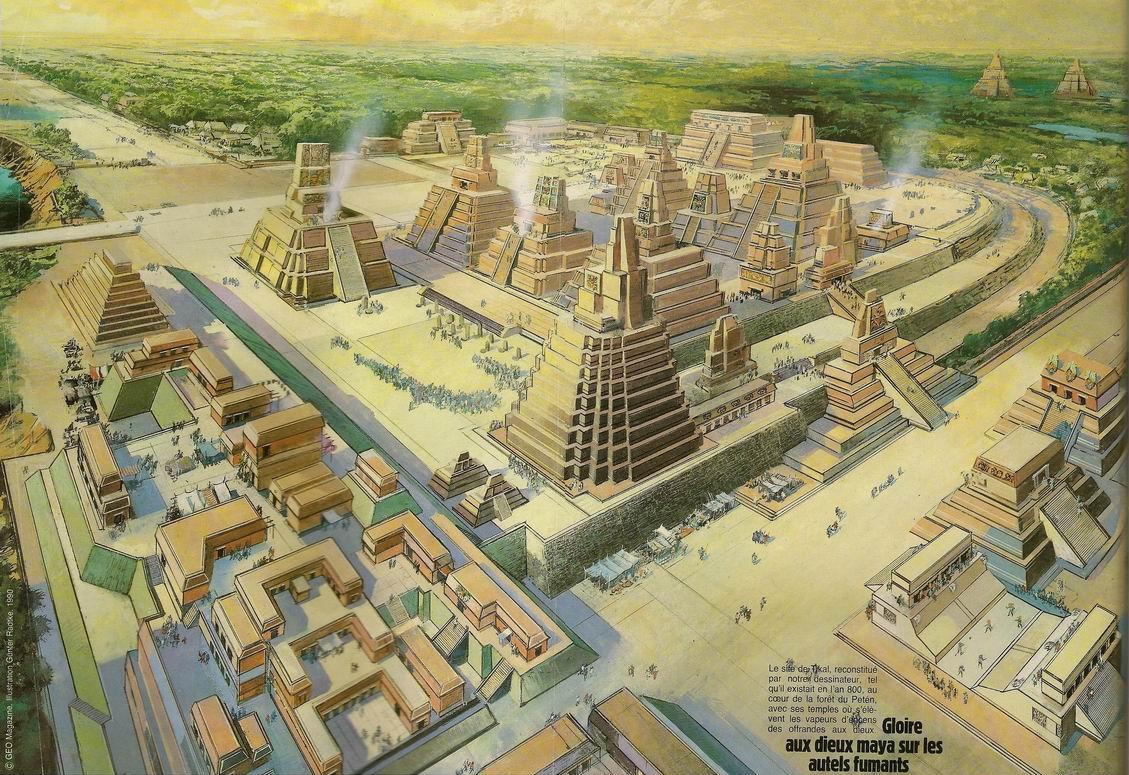Quote:
Originally Posted by Capsicum

With the Old World, according to historians I believe I've read, Rome, Baghdad and maybe a couple Chinese cities had broken the million people mark before the Industrial era. Large Medieval European cities (apart from Constantinople) seemed to have ranged around the tens of thousands to around 100-200 000 at the higher end.
The largest pre-European colonization New World cities didn't break the million mark like Rome, but did compare favorably with the largest Medieval European cities. For the Aztec capital Tenochtitlan, which Mexico City was later built on, I've seen various estimates at 200,000, 300, 000 or so at the time of Spanish conquest. Chan Chan in Peru, contemporary to Medieval Europe I think I've seen estimates of the upper range of tens of thousands to 100 000 or more. Cahokia would be the largest in North America north of Mesoamerica at 10-20,000 people.
|
Also Alexandria reached the same population a century earlier than Rome, in 100 BC. Other cities pre-industrial that the historians actually agree on is Baghdad, Chang'An,
Kaifeng, Hangzhou, Nanjing, Angkor, Beijing, Ayutthaya (a canal boat city in Thailand) and possibly Jinling (near Nanjing) in 1400, and Edo (Tokyo) in 1720 as over a million.
There have been so many numerous, massive cities through time. Who would have thought Gurganj, Turkmenistan (vying with nearby Merv) with 600,000 people in 1220,
would have been the world's largest city?
All that remains of it (part of its outer wall):
 https://supermouse.blog
https://supermouse.blog
Or Polonnaruwa in 1180 Sri Lanka

 www.mysrilankaholidays.com
www.mysrilankaholidays.com
 https://findingbeyond.com
https://findingbeyond.com
Abbasid Baghdad and its giant palace, the crossroads of the world before its million+ citizens (and their cats and dogs) were beheaded by the Mongols and a vast pyramid of
skulls made outside the walls in 1258.

 https://i1.wp.com/thestrangecontinent.com
https://i1.wp.com/thestrangecontinent.com
As mentioned before the 'floating' city of Ayuthhaya, Thailand, whose million residents lived on moored barges on the canals
 www.ayutthaya-history.com
www.ayutthaya-history.com


 www.hi-fi.ru
www.hi-fi.ru
Autthaya was destroyed by the Burmese, whose rival empire was centred on Bagan. Bagan today is an abandoned valley where 2,200 stone temples (out of 10,000 gilded
temples, 1000 towering stupas and 3,000 monasteries in its heyday) survive. Bagan and its city site, 8x larger than Rome, was also destroyed by the Mongols in 1287.
 www.PanARMENIAN.Net
www.PanARMENIAN.Net
 https://beartales.me/2013/12/16/gall...burma-myanmar/
https://beartales.me/2013/12/16/gall...burma-myanmar/
Likewise other jungle cities....
Angkor was the worlds largest pre-industrial city, it wasn't just population but scale, the size of Inner London today, at over 1,000 sq km, with new 'suburbs' still being
discovered. It was over 80x the size of ancient Rome.
All that remains are the stone built temples and vast baray canals (for scale, Angkor Wat at the bottom is the world's largest religious structure, covering 4x the Vatican City and twice the Forbidden City):
 www.mappery.com
www.mappery.com
Satellite data is uncovering the buildings that once stood on the empty fields today.

Tikal, Guatemala was the second largest ancient site (3,000 structures survive over a city once 576 sq km in area, that's still being discovered, with a population up to 300,000 in 682 AD):
Its central political-religious complex alone was larger than Rome, at 16 sq km (Rome was only 14.86 sq km).

 http://files.abovetopsecret.com
http://files.abovetopsecret.com
 http://medieval.mrugala.net
http://medieval.mrugala.net

 http://medieval.mrugala.net
http://medieval.mrugala.net
They were in turn taken over by the Teotihuacan, a smaller yet still huge city to the north




